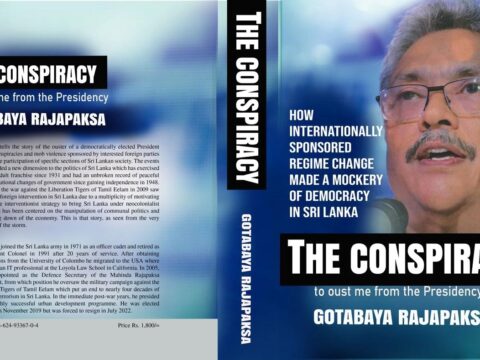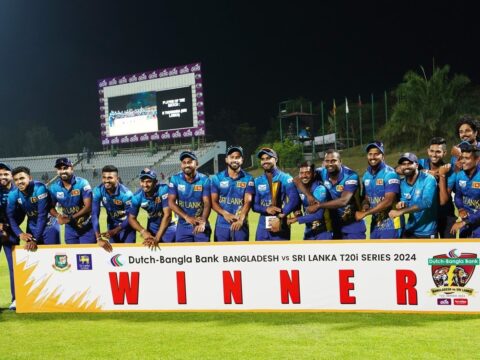DUBAI: A temporary ban on using saliva to shine cricket balls has been made permanent by the International Cricket Council. The ban, initially adopted as the use of saliva to shine one side of the ball helped it swing through the air, was brought about in May 2020 as a temporary measure to prevent coronavirus transmission; ICC has now declared it will stay.
The new Playing Conditions will come into effect on October 1, 2022, which means next month’s T20 World Cup in Australia will be the first major tournament to enforce these new rules.
“The ban on saliva use has been in place for over two years in international cricket as a Covid-related temporary measure, and it is considered appropriate for the ban to be made permanent,” an ICC statement said.
The controversial ‘running out’ of a non-striker by a bowler of will also no longer be classed under ‘unfair play’, after a raft of rule changes from October 1 were endorsed by a meeting of the ICC chief executives’ committee. The now legitimised move will be shifted to the “Run Out” section.
“Running out a non-striker for backing up too much will now be considered as a regular run out,” the ICC said.
The dismissal was famously dubbed a “Mankad” – named after an Indian bowler who ‘ran out’ Australia batsman Bill Brown in the 1948 Sydney Test.
In other significant rule changes, a new batter will now have to face the next ball at the striker’s end.
“Previously, in case the batters crossed before a catch was taken, the new batter would be at the non-striker’s end,” ICC said.
The time taken by an incoming batter to take a strike in tests and one-day internationals has now been reduced from three minutes to two, while in T20 internationals it remains at 90 seconds.
One of the other new rules states that if fielders make any unfair and deliberate movements while the bowler is running in to bowl, the batting side can be awarded five penalty runs.
Another change allows the use of hybrid pitches at all men’s and women’s one-day and T20 internationals.
Hybrid pitches – a blend of natural grass with artificial turf – have only been previously used in women’s T20 internationals.
The ICC announced the changes to its ‘playing conditions’ after the Chief Executives’ Committee (CEC) ratified the recommendations from the the Men’s Cricket Committee led by former India captain Sourav Ganguly. These changes were made to the Playing Conditions in MCC’s updated 3rd Edition of the 2017 Code of the Laws of Cricket.
The conclusions were also shared with the Women’s Cricket Committee, who endorsed the recommendations.
The new Playing Conditions will come into effect on October 1, 2022, which means the ICC Men’s T20 World Cup in Australia next month will enforce the news rules.
The main changes are as follows:
Batters returning when caught: When a batter is out Caught, the new batter will come in at the end the striker was, regardless of whether the batters crossed prior to the catch being taken.
Previously, in case the batters crossed before a catch was taken, the non-striker would take strike the next ball while the new batter would be at the non-striker’s end.
Use of saliva to polish the ball: This prohibition has been in place for over two years in international cricket as a Covid-related temporary measure and it is considered appropriate for the ban to be made permanent.
The outbreak of COVID-19 had enforced the rule to avoid transmission of the virus on the field. The rule came into play when cricket resumed after a break in July 2020 and will now be made permanent. During the saliva ban, the players resorted to the use of sweat to shine the ball, which has proven to be effective.
Incoming batter ready to face the ball: An incoming batter will now be required to be ready to take strike within two minutes in Tests and ODIs, while the current threshold of 90 seconds in T20Is remains unchanged.
Previously, the incoming batter had three minutes to take strike in ODIs and Tests but it has now been reduced. Failing to do so, the fielding captain can appeal for timed out.
Striker’s right to play the ball: This is restricted so as to require some part of their bat or person to remain within the pitch. Should they venture beyond that, the umpire will call and signal Dead ball. Any ball which would force the batter to leave the pitch will also be called No ball.
Unfair movement by the fielding side: Any unfair and deliberate movement while the bowler is running in to bowl could now result in the umpire awarding five penalty runs to the batting side, in addition to a call of Dead ball.
Running out of the non-striker: The Playing Conditions follow the Laws in moving this method of effecting a Run out from the ‘Unfair Play’ section to the ‘Run out’ section.
Previously looked down as unfair play, running out a non-striker for backing up too much will now be considered as a regular run-out.
Bowler throwing towards striker’s end before delivery: Previously, a bowler who saw the batter advancing down the wicket before entering their delivery stride, could throw the ball to attempt to Run out the striker. This practice will now be called a Dead ball.
Other major decisions: The in-match penalty introduced in T20Is in January 2022, (whereby the failure of a fielding team to bowl their overs by the scheduled cessation time leads to an additional fielder having to be brought inside the fielding circle for the remaining overs of the innings), will now also be adopted in ODI matches after the completion of the ICC Men’s Cricket World Cup Super League in 2023.
The rule has already been implemented and has cost teams games due to them maintaining a slow over rate, one of the examples being the second match of the 2022 Asia Cup between India and Pakistan.
Ganguly praised all the ICC Cricket Committee members for their contributions to the recommendations.
“It was an honour chairing my first meeting of the ICC Cricket Committee,” he said.
“I was pleased with the productive contribution of the Committee members which resulted in key recommendations being made.
“I thank all members for their valuable input and suggestions.”
The ICC Cricket Committee: Sourav Ganguly (Chair); Ramiz Raja (Observer); Mahela Jayawardena and Roger Harper (Past Players); Daniel Vettori and VVS Laxman (Representatives of Current Players); Gary Stead (Member Team Coach Representative); Jay Shah (Full Members’ Representative); Joel Wilson (Umpires’ Representative); Ranjan Madugalle (ICC Chief Referee); Jamie Cox (MCC Representative); Kyle Coetzer (Associate Representative); Shaun Pollock (Media Representative); Greg Barclay and Geoff Allardice (Ex Officio – ICC Chair and Chief Executive); Clive Hitchcock (Committee Secretary); David Kendix (Statistician).




